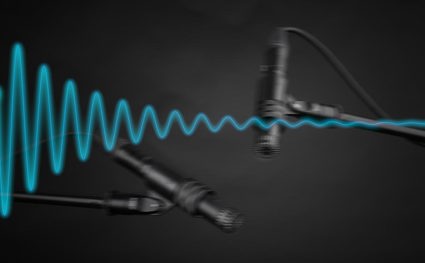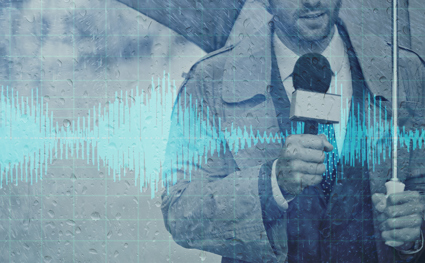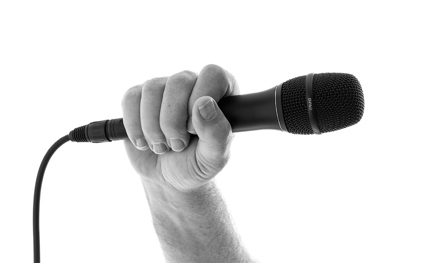How to avoid handling noise
Handling noise can disrupt the audio and should be minimized as much as possible. This article takes a closer look at how it is created and gives a couple tips on how to minimize it.

Microphones react to the acoustic sound. However, sometimes they may also generate signals from mechanical impact, for example when a person taps on the microphone to hear if it works. In addition, more subtle effects may occur depending on the way we hold and handle microphones. Most microphone designs use a holder to mount on a stand. But handheld microphones, as the name implies, do not.
The mic housing usually takes the brunt of any mechanical impact. In some cases, the cable may also be affected. While fumbling with the microphone and cable may generate unwanted sounds, the loudest unwanted output often occurs due to “rubbing” the microphone.
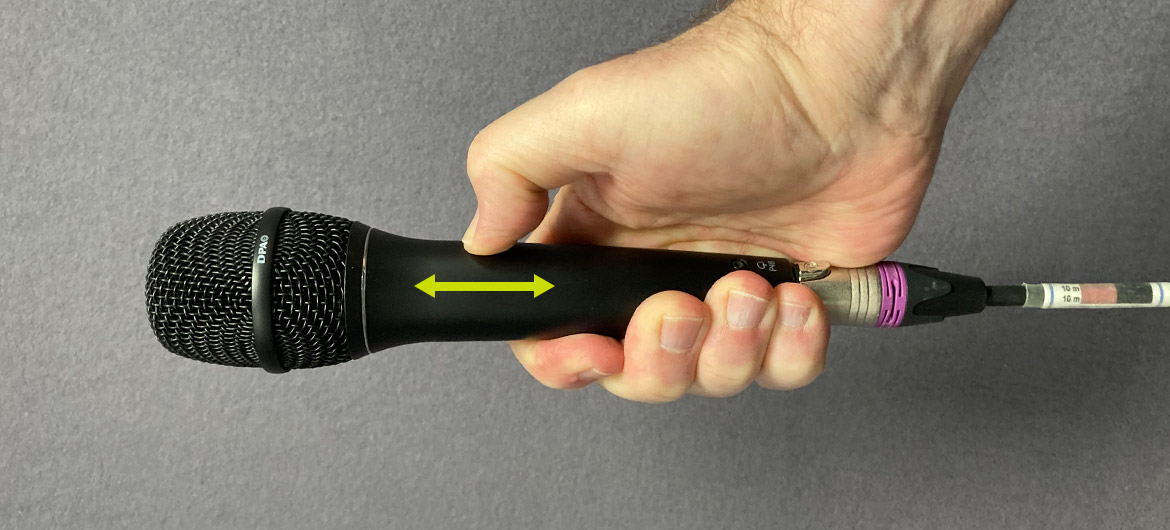
Figure 1. Rubbing the microphone with the thumb.
Friction or slippery?
The shape of the mic handle is essential. keep a relaxed grip on the microphone. For the user, it is important to keep a relaxed grip on the microphone – the shape must be comfortable. Additionally, surface friction is vital – the surface must not be slippery. Hence the surface is treated to provide adequate friction between it and the hand holding it.
To set some focus on this critical issue, measurements have been made on how rubbing affects the microphone pick up.
Figure 1 shows, a thumb firmly pressed against the housing and then forced to move toward the microphone head. Due to the friction, the finger does not move smoothly but makes small “jumps” across the surface. This results in impulses generated by the microphone.

Figure 2. Impulses from noise caused by rubbing a microphone with a thumb. Left a 4011A Cardioid Microphone and right a DPA 2028 Vocal Microphone. Each excerpt covers 1 second of recording.
Error loading Partial View script (file: ~/Views/MacroPartials/TaggedProducts.cshtml)
Figure 2 shows what these impulses may look like when doing this on two different microphones: A 4011A (pencil mic to be used with holder) and a 2028 (handheld mic).
The absolute peaks from this rubbing can be compared to an equivalent SPL (equivalent SPL is the SPL that would produce a signal of the same magnitude as the rubbing does). In this case, the equivalent peak levels are 113 dB SPL (4011A) and 97 dB SPL (2028).
Below, in figure 3, the frequency content of these impulses is analyzed. The microphone, designed for handheld use, exhibits less noise.
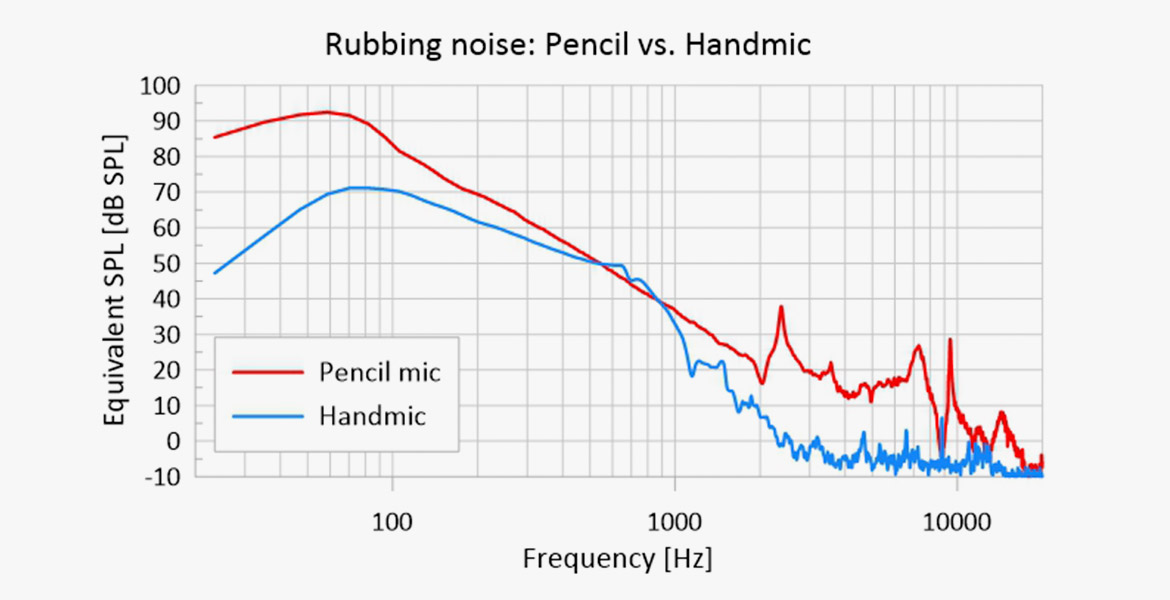
Figure 3. Frequency analysis of a series of impulses from microphone rubbing.
Other sources of unwanted noise can be finger rings clicking against the housing. Figure 4 shows the impulses from the microphones 4011A and 2028.
The equivalent SPL (peak) is 80 dB (4011A) and 61 dB (2028). This show that the handheld design provides much better damping of this clicking.

Figure 4. The impulses from a finger ring’s click against the housing 4011A left and 2028 right.
The cable
The cable is attached to the microphone via the connector. Usually, the cable attachment is a somewhat rigid fixation applied by soldering the leads and the screen. Further, a cable relief is made to strengthen the attachment, so it does not harm the soldering.
The connector has three pins which usually fit into spring-loaded sockets to retain a proper connection.

The level of cable noise is usually negligible in good, flexible microphone cables compared to the rubbing noise. However, thick cables, used outdoors in cold weather can transmit some noise.
Conclusion
All mics can pick up handling noise, but a good handheld microphone is designed to pick up less of it. Make sure to use a mic that is comfortable for the user to hold (handheld mics for handheld use). And the best advice is to ensure that the mic is held properly so that it doesn’t create this kind of noise.
